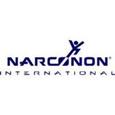Drug Addiction can slither in unexpectedly, starting as social or recreational use and turning even the mildest users into people willing to go to desperate measures for their next fix. Drug use becomes more and more frequent, and then the same amount doesn’t produce the same effects so dosages have to be increased. Suddenly the user finds himself dependent on the drug just to feel normal, and stopping produces illness and severe cravings (part of withdrawal).
Drug use can also start out from doctor’s orders. A person may suffer an injury, go through surgery, or have dental work, and the doctor typically follows up with a prescription for opioid painkillers such as Oxycontin or Percocet. The user may suddenly find himself increasing the dosage or taking it more frequently, and so the downward spiral begins [ref: Mayo Clinic]
How to Recognize Drug Addiction
There are a number of signs to watch for in yourself and your loved ones. The top ten signs of drug addiction are:
1. Compulsions to use the drugs on a regular basis, either daily or several times a day. Users become very good at explaining the need for this regular use, especially since they feel sick when they stop taking it, so it can be difficult to spot the problem at this point.
2. Going to desperate measures to acquire the drug, such as spending money on it when you can’t afford it, stealing in order to get it, and so on.
3. Being reliant on the drug to deal with life problems or emotional difficulties.
4. Using the drug when you know you shouldn’t, such as driving under the influence or operating heavy machinery.
5. Increasingly putting your attention on the drugs, spending more time and energy figuring out how to get more.
6. Changes in personal hygiene as the user becomes more and more fixated on drug use. This may include a strange body odor or a generally shoddy appearance where there wasn’t one before.
7. Personality changes, such as mood swings or increased secrecy.
8. Drastic changes in energy levels, as drugs can be
either stimulants or depressants. Stimulants produce an energy spike and the person may appear agitated, may be unable to sleep, or even experience paranoia. Depressants decrease energy levels, producing severe drowsiness, lowered awareness and reaction time, difficulty concentrating, and strange sleep patterns.
9. Changes in speech, such as slurred speaking or a nervous, agitated tone of voice.
10. Addicts experience physical changes unique to each drug. For example, marijuana use produces bloodshot eyes and increased appetite. Prescription opioids can cause the eyes to contract to the size of pinpoints. Meth and coke use can cause weight loss and problems with the nasal passages if the user snorts the substance. Heroin use can manifest itself in a haggard, gaunt appearance and needle marks in the arm. It is important to familiarize yourself with the various manifestations of each drug in order to recognize the signs in your loved ones.
Drug addiction can start innocently enough and spiral out of control pretty quickly. If you know someone displaying the symptoms above see to it that they get help.
This article is from Narconon drug and alcohol rehabilitation and education programs. More information can be found by calling 800-775-8750 or go to www.narconon.org.
Clark Carr is the President of Narconon International, the worldwide management headquarters of the Narconon drug rehabilitation and prevention network. Narconon now has 150 centers in 50 countries. Mr. Carr worked for years as a teacher, youth counselor, and business consultant. In 1985 he was asked to take over administration of a Narconon treatment center in Los Angeles. He took that responsibility on and received intensive, hands-on training in the Narconon methodology, learning as well a great deal about the chaotic lives of addicts.
After personally running a Narconon rehab center for 10 years, he was invited to become President of the international network. Since 1995 he has travelled the world speaking on behalf of Narconon and demonstrating its methods and discussing results. He has spoken before conferences in cities as diverse as New York City; Shanghai, China; Mumbai, India; Stockholm, Sweden; Abuja, Nigeria; Almaty, Kazakhstan, and Moscow, Russian Federation. He has delivered drug educator training sessions in the Philippines, Pakistan, Mexico, and across the United States. For the last several years, he was worked throughout wartorn Mexico helping religious Twelve Step (Alcoholics Anonymous) programs to learn some of Narconon’s drug-free, holistic treatment methods.
He is also a published author.

Post new comment
Please Register or Login to post new comment.